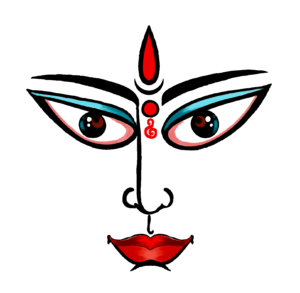
The Shakti Pitha of Mystical Reverie
Indrakshi Mata
Unraveling the Serenity of Nainativu
Location :
Nainativu, Sri Lanka
Heading :
Mystical Reverie: Unraveling the Serenity of Nainativu – The Shakti Pitha of Indrakshi Mata
Introduction :
Beyond the azure waters of the Indian Ocean, nestled on the serene shores of Sri Lanka, lies an ancient realm steeped in mysticism and spirituality. Nainativu, also known as Manipallavam, is a haven of divinity, and at its heart, it cradles the sacred Shakti Pitha of Indrakshi Mata. Here, the resonance of anklets, the embodiment of the Divine Feminine, is worshipped with reverence. Join us on a mystical journey to explore the enchanting world of Nainativu.
The Tale of Indrakshi Mata :
The story of Nainativu and the Shakti Pitha of Indrakshi Mata is rooted in a divine tapestry of mythology. The focal point of this legend is the silambu, or anklets. These anklets are symbolic of the goddess’s feet, and it is the “stomach ornament” of the Divine Mother that has earned Nainativu its place in the pantheon of Shakti Pithas.
Indrakshi Mata, also known as Nagapooshani or Bhuvaneswari, embodies the nurturing and sustaining aspect of the Divine Mother. She is the guardian of the universe, bestowing her benevolence upon all who seek her blessings.
The Sacred Sanctuary – Nagapooshani Amman Temple :
At the heart of Nainativu, the Nagapooshani Amman Temple stands as an icon of spirituality and divinity. This temple, with its vibrant Dravidian architecture and towering gopuram, is the epicenter of devotion on the island. The temple complex is a reflection of the profound cultural and spiritual heritage of this region.
As you step into the temple, the divine presence of Indrakshi Mata envelops you. The idol of the goddess, bedecked in resplendent jewelry, is a sight to behold. Her countenance radiates serenity and grace, her four arms holding powerful symbols that represent her nurturing and protective nature.
Exploring the Sacred Grounds :
The Nagapooshani Amman Temple complex is not just about the main sanctum; it’s a haven of spirituality and devotion. The shrine dedicated to Rakshaseshwar, also known as Nayanair, stands as the protector of the Shakti Pitha. Rakshaseshwar is the guardian deity, ensuring the sanctity and safety of all who visit this sacred place.
The temple is adorned with intricate carvings, depicting tales from Hindu mythology and the divine feminine. The serene courtyard, flanked by mandapams (pillared halls), is a place where pilgrims and devotees gather to seek blessings and immerse themselves in prayer.
A Haven of Devotion :
The Nagapooshani Amman Temple draws visitors from across the globe, making it a tapestry of diverse cultures and beliefs. Pilgrims come to seek the blessings of Indrakshi Mata, whose anklets symbolize her grace and protection. It is believed that worshipping at this Shakti Pitha brings fulfillment, protection, and spiritual enlightenment.
The temple’s tranquil ambiance, coupled with the collective devotion of the pilgrims, creates a unique spiritual aura that leaves a profound impact on the hearts and minds of those who visit.
Celestial Celebrations :
The temple is a hub of festivities throughout the year. The annual Masi Magam festival, celebrated in February-March, is a grand celebration with vibrant processions, traditional music, and sacred rituals. It is a time when the temple comes alive with the vibrancy of devotion.
Conclusion :
The Shakti Pitha of Indrakshi Mata in Nainativu, Sri Lanka, is not merely a place of worship but a journey into the divine feminine energy. It is a destination where the mystical and the earthly blend harmoniously, and where the anklets of the goddess reverberate with the echoes of devotion. Nainativu, with its tranquil shores and sacred temple, stands as a testimony to the enduring spiritual legacy of the region, leaving visitors with a sense of peace and profound spirituality.
Editor – Kaalchakra Team
[ Note – Before Concluding anything as a Finale, Please Go through Original Scriptures of Vaidik Literature Written in Sanskrit and Also with Meaning of That time of Language. Because English is a Limited language to Explaining the Deeper Knowledge of Vaidik Kaal. ]
